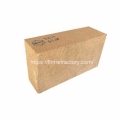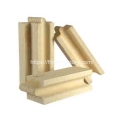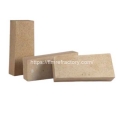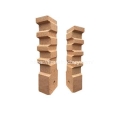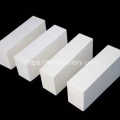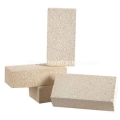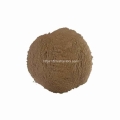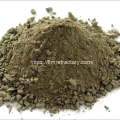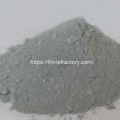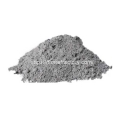- Performance. Innovation. Worldwide. Your trustworthy Refractories Manufacturing Partner--Fireramo
- +86 175 3769 7777
Contact
Contact us on WhatsApp
High Quality Refractory Bricks
Insulation Bricks for Sale
Monolithic Refractory
Several aspects of rotary kiln masonry should be noted

The rotary kiln is an important piece of industrial equipment widely used in cement production, metallurgy, chemical industry and other industries. During the masonry process of rotary kiln, proper operation and precautions are essential to ensure the stability and safe operation of the kiln. fireramo will introduce several aspects of rotary kiln masonry that require attention, aiming to help you understand the key points of the masonry process in order to ensure the quality of masonry and the reliability of the kiln.
During rotary kiln refractory brick masonry, workers should pay attention to the following points in order to ensure the quality of masonry.
Material selection
In rotary kiln masonry, the selection of suitable refractory materials is crucial. Refractory bricks are the most commonly used materials, and different types of refractory bricks can be selected according to the working conditions of different parts of the kiln, such as high alumina, silicate or silicon carbide bricks. In addition, refractory castables can be used for masonry, which is particularly suitable for curved parts of the kiln. Regardless of the material chosen, it is important to ensure that it is resistant to high temperatures, abrasion and corrosion.
Masonry process
Before masonry
The rotary kiln body must be clean and dry. Sand particles must be removed and rusted barrels must be sanded and dried.
Laying
The larger head of the lining bricks should be close to the kiln body, and the uneven part of the welded joints should be polished and smoothed. The deformed part of the kiln body should be leveled with refractory mortar. Ensure that the kiln bricks can be in close contact with the kiln body, and there should be no gap between them.
Before laying bricks
Find the center of the kiln body with a level at 3 m intervals in the axial direction of the kiln. Draw the centerline of the kiln body with two adjacent kiln shells as endpoints. Take the starting point of bricklaying at the kiln head as the reference, and draw a circle perpendicular to the centerline of the kiln body every 1 meter to prevent the refractory bricks in the same circle from not being on the same vertical plane, and lay a good foundation for future masonry.

Bricklaying
The control of masonry quality is the key to ensure the stability and safe operation of the kiln body. In the process of masonry, pay attention to the denseness and bonding of the masonry materials to avoid voids, cracks or looseness.
Note: It is strictly forbidden to place the refractory bricks upside down or horizontally. The joints of small heads should not be larger than those of large heads. The maximum width of the joints should not exceed 1.5 mm. Because of the large thermal expansion of directly bonded magnesium-chromium bricks, an expansion joint of 2 mm should be left for each ring of bricks. It is necessary to compensate expansion joints with cardboard and leave no expansion joints in the axial direction. It must be tamped with rubber hammer or wooden hammer, and the use of iron hammer is strictly prohibited.
Masonry joint treatment
In the masonry of rotary kiln, the treatment of joints is an important part. The treatment of the joints directly affects the sealing and strength of the whole kiln body.
Note: The thickness of the locking iron plate should not be more than 2mm. if several iron plates are used, they should be evenly distributed over the entire locking area.
The iron plates should not be half inserted into the refractory brick joints, otherwise the small end will be too tight and the big end will be loose.
Baking and maintenance
After completing the masonry, proper baking and conservation is necessary. According to the requirements of the refractory material, gradually increase the temperature of the kiln body to adapt to the high temperature environment. At the same time, the baking speed and temperature gradient should be controlled to avoid damage caused by thermal stress. During maintenance, care is taken to maintain proper humidity to ensure the stability and durability of the material.
Regular inspection and maintenance
After the kiln is put into operation, regular inspection and maintenance are essential. Regular inspection of the condition of the masonry section includes observation for cracks, wear or corrosion. If any abnormality is found, timely repair or replacement measures should be taken to ensure the stability and safety of the kiln body. In addition, the kiln should be regularly cleaned of accumulated ash and materials and kept well ventilated to avoid clogging and affecting the normal operation of the kiln body.
Specializing in refractory materials for over 20 years, we provide professional refractory solutions for the global high temperature industry.
Related Posts:
- Causes and solutions to cracking of castables after baking
- Enhancing the Medium Temperature Strength of Refractory Castables
- Ways to ensure the accuracy of refractory brick acceptance results
- Acceptance inspection after cement kiln construction
- Three Common Ways of Damage to the Sliding Nozzle for Ladles
Theme By Fireramo
